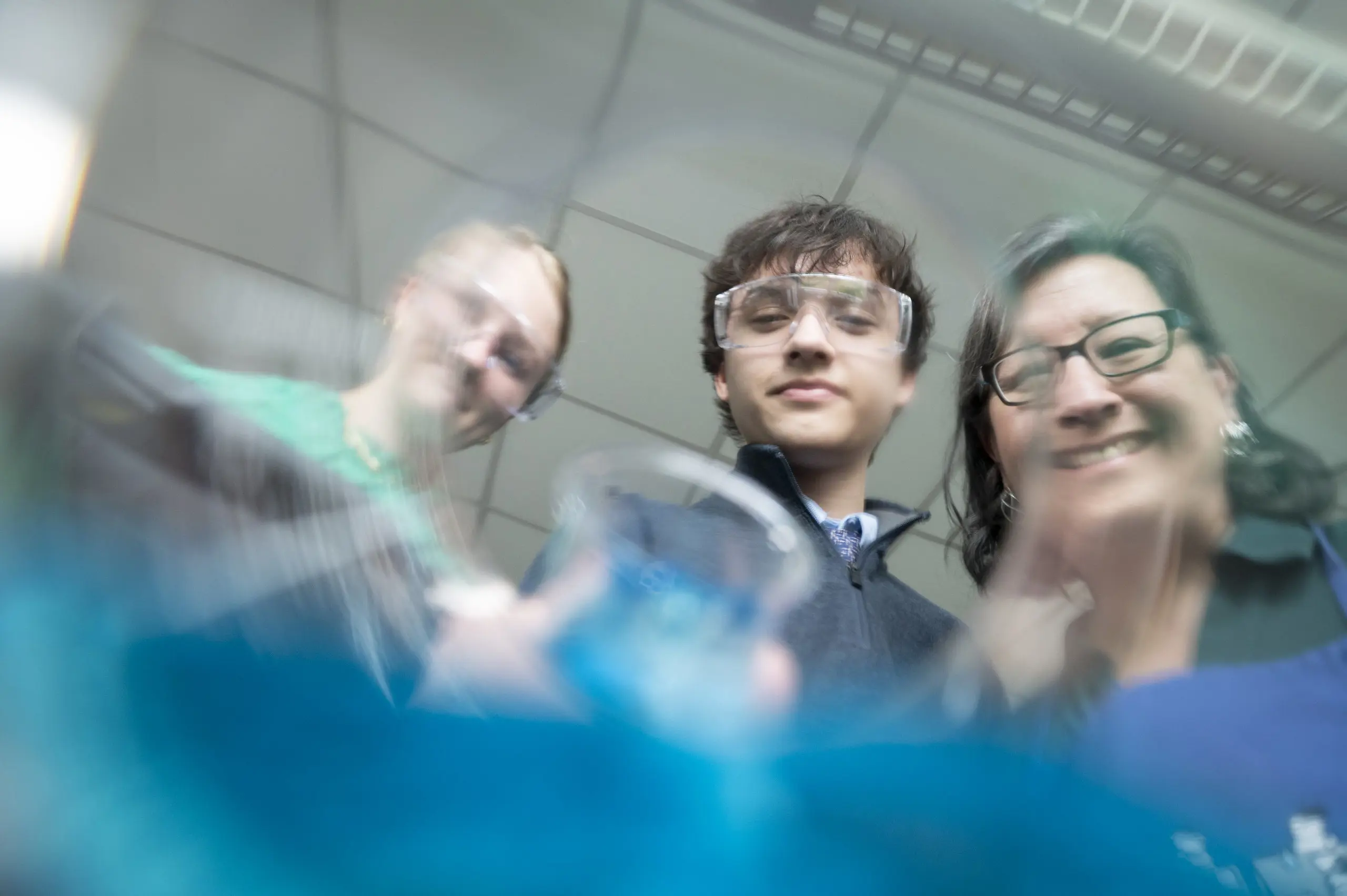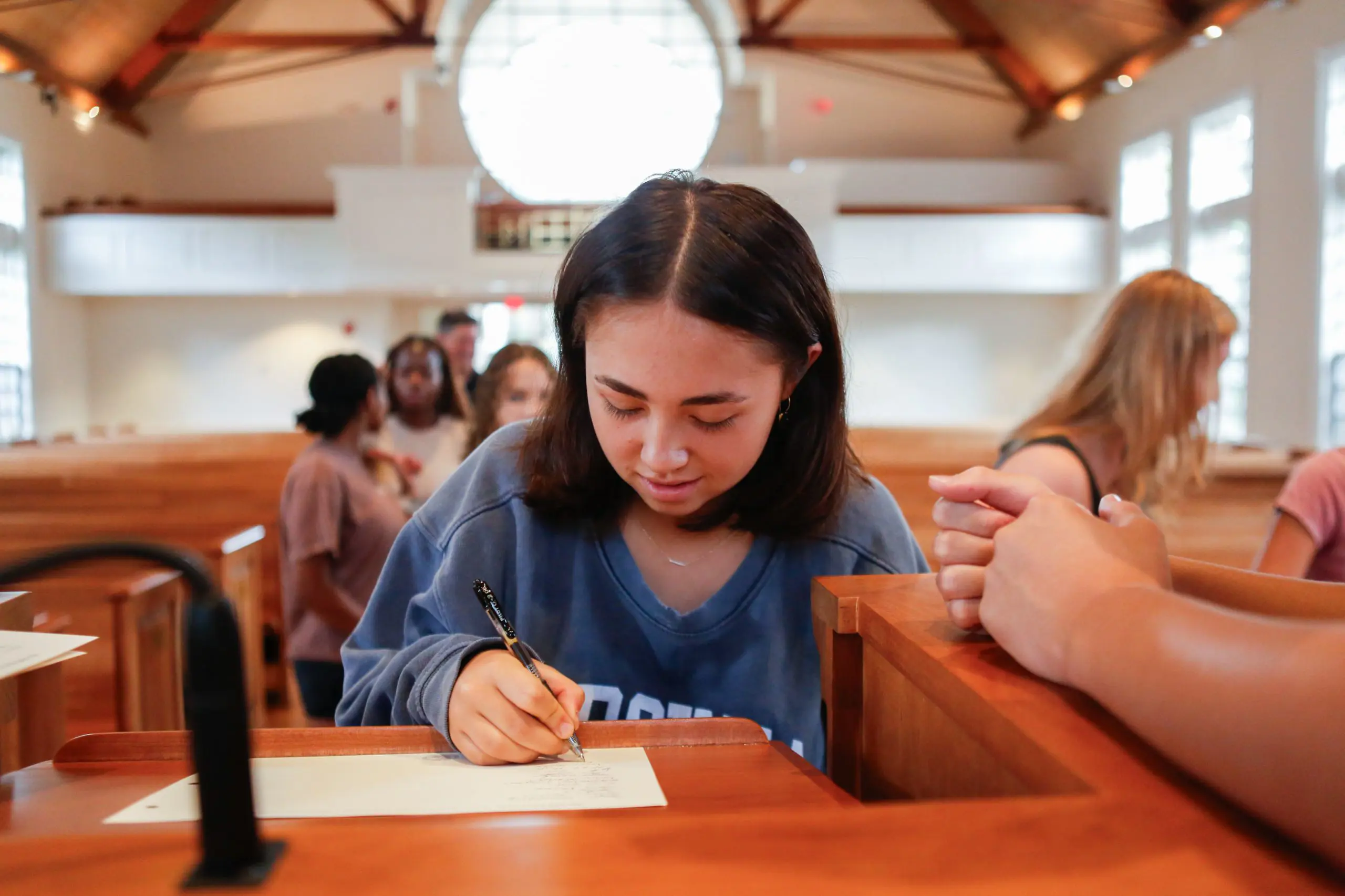In This Section
Spring 2025: Inside the Issue
Read the full issue online
COURAGE: THE CAMPAIGN FOR EPISCOPAL
COMES TO AN AUSPICIOUS CLOSE
On June 30, we will celebrate the end of the Courage Campaign, the most ambitious campaign in Episcopal’s history. From the new dormitories and deButts Health & Wellness Center to investment in a world-class faculty and staff and robust support of financial aid, the effects of Courage will be felt at EHS for generations to come.
WHO IS AN EPISCOPAL HIGH SCHOOL GRADUATE?
At Episcopal, we often talk about the Portrait of a Graduate: a Venn diagram depicting the intersection of intellectual and moral courage that results in courageous action. Meet four outstanding alumni who embody these qualities.
EPISCOPAL THROUGH THE LENS OF ROCKY JIANG ’27
Communications liaison and avid photographer Rocky Jiang ’27 chronicled life on campus this winter and spring — showing the magic and fun in everyday moments.
Senior Mazen Asad on how Newton’s laws of motion have defined his Episcopal experience.

Past Issues |
|---|
|
Inside the McCain-Ravenel Center for Intellectual and Moral Courage | COURAGE: THE CAMPAIGN FOR EPISCOPAL | Join the Club | The First of its Kind |Our Time is Now | Like Riding a Bike EHS: The Magazine Archives |
From the Archives
From the Archives stands as a distinctive segment within EHS: The Magazine, shedding light on moments from Episcopal's history. The articles date back to the 2006 edition of the magazine.
Health and Wellness Through the Years
From a time when the School physician was an adjunct position, comprising area doctors who visited campus, to the state-of-the-art deButts Health & Wellness Center of today with a full-time physician, a medical services director, eight nurses, a wellness coordinator, and school counselors, Episcopal has a rich history of individuals who have cared deeply about the health and well-being of students.
Storytelling Across Time
Four students in Caroline DeVoe’s Digital History class explored Episcopal’s past through archival research, each pursuing a topic aligned with their interests.
Out of the Blue: How EHS Became the Maroon and Black
EHS adopted Maroon and Black in the 1890s, replacing the original blue and black to better reflect the School’s dignity and enduring spirit.
Episcopal’s First Chinese Students
In 1892, Episcopal High School reached far beyond its traditional southern source of students for the first time with the enrollment of the School’s first Chinese student, Theodore Wong.
“Our improvement fund prospers and encourages us all …”
For more than a century the EHS community has stepped up to support the School in its ambitious plans to deliver a first-rate education within facilities that inspire the pursuit of excellence.
A $1,782 Field Trip
In 1888, Principal Launcelot Minor Blackford went to great lengths to show students the home of the first president.
Guns, Haircuts, and Sweets
How businesses once courted EHS students through advertisements in The Chronicle.
Giving Thanks, An EHS Tradition
“The boys were much elated over the repast, a half dozen making themselves sick by repletion.” - Launcelot Blackford Thanksgiving 1874
Episcopal Goes to War
How a student’s curiosity about the “forgotten war” led him to create a rich history of the school during WWI.
A Timeless Welcome
A tree-lined campus approach holds deep yet varied meaning for generations of students and faculty.
History in Their Hands
Students are connecting with The High School across generations, thanks to Episcopal’s archives. During the first two months of this year alone, 35 students visited Bryan Library to incorporate the School’s archival holdings into their research.
A Weekend to Remember
Finals wasn’t always just a dance. It was once an entire weekend.
The High School in Panorama
The School’s archives hold numerous panoramic photographs from this time period that capture the campus and the community as they had never been shown before.
All in All Jan. 21, 1957 "Quite a Thrilling Day"
On January 21, 1957, Page Dame lll ’59 and Junius Fishburne Jr. ’58 took part in history by attending the second inauguration of President Dwight D. Eisenhower.
The Legacy of Lettie Pate Evans
As a deeply devoted Episcopalian who was raised in the Episcopal Church in Virginia and who valued education, Lettie Pate Evans chose Episcopal High School as a beneficiary of her philanthropy.
Playing It Safe: Football Helmets Then and Now
The earliest football helmets, such as the one pictured here, worn by Gaylord Lee Clark, Sr. 1903, appear to have more in common with aviator caps than the football helmets fans are familiar with today.
The History of Keeping in Touch
Before the days of email, texting, and even the telephone, EHS students kept in touch by mail. Letter-writing was practically an art form and the only way to share and receive news from home. Letters, eagerly anticipated, were read and re-read. Before student mailboxes were introduced in the 1930s, student mail was delivered to the dining hall.
UT SIS MENS SANA IN CORPORE SANO: A Strong Mind in a Strong Body
Stewart Gym opened in 1913 and has supported EHS students’ growth and well-being, serving over the last 100 years a multitude of purposes for the school community.
The Spiritual Foundation of Episcopal High School
Episcopal High School was founded in 1839 on Christian principles. Although the School has evolved to meet the spiritual needs of a religiously diverse student body, spirituality is still at the core of school life.
An Inaugural Tradition
Episcopal's long history of attending presidential inaugurations dates back to 1873, when nearly the entire student body braved extreme weather to witness President Grant’s second swearing-in—beginning a rich tradition of civic engagement that continues today with students and faculty attending modern-day ceremonies on the National Mall.
Welcome to Episcopal High School
While EHS students’ travels to the School may no longer conclude with the excitement of a ride in Mack or the Donaldson brothers’ “bus,” Episcopal High School extends a warm welcome to all new and returning students, arriving by family car, taxi, or other means.
Looking Sharp, Not an Issue!
It is hard to imagine a time at Episcopal without athletic issue, the ubiquitous shirt and shorts worn by EHS students for afternoon athletics.
A Strong Mind in a Strong Body
While many of his peers viewed athletics as a waste of time, Launcelot Blackford, EHS Principal 1870-1913, recognized their value in building character and expending youthful energy.
All Aboard! Train Travel to EHS
The experience we know as the start of school, parents driving or flying with their children to Episcopal and helping unload their belongings for a tearful goodbye in front of the dorm, is a relatively new development. In the early days of EHS, those goodbyes were frequently exchanged at hometown train stations.
Photographic Memories
The tradition of student photography and the sharing of photos has long been supported by developments in technology, but never more so than today.
Weathering the Snow King Blizzard of 1899
Hit by the historic “Snow King” blizzard of 1899, Episcopal’s students and faculty endured more than 40 inches of snow, drifts several feet high, single-digit temperatures, wind speeds in excess of 35 miles an hour (35 mph gusting to 48 mph), no water due to frozen pipes, and interrupted deliveries.
From the Archives: 19th Century Admissions
A 19th-century Episcopal student would likely be amazed at how comprehensive the School’s application process is today.
Student Letter from 1858
A hand written letter by Joseph Bryan, Jr., Class of 1861, while he was a student.









































